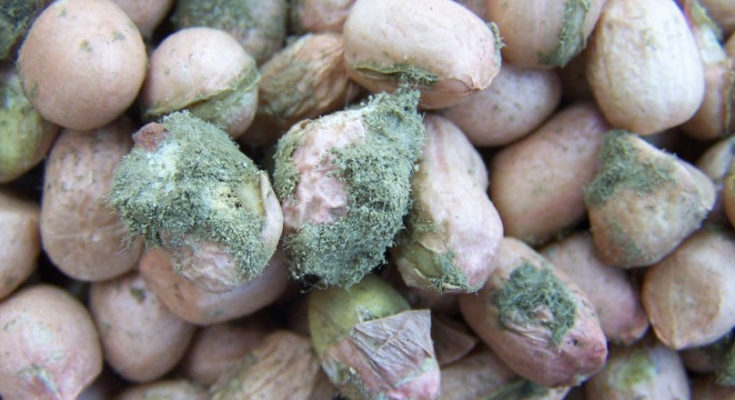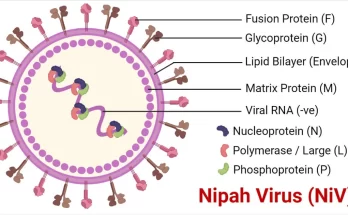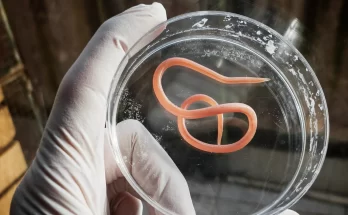Aflatoxins, a group of naturally occurring toxins are produced as secondary metabolites by the fungal species, Aspergillus flavus, Aspergillus parasiticus and Aspergillus nomius. The word aflatoxin derives from A-fla means A- Aspergillus, fla- flavus, the toxin produced mainly by Aspergillus flavus fungus. Aflatoxin is categorized under mycotoxins which comprise aflatoxins, ochratoxins, citrinin, ergot alkaloids, patulin and Fusarium toxins.
Major types of aflatoxins
Aflatoxins B1, G1, B2 and G2 are major types of aflatoxins among 18 types reported, found in food, animal feed and spices. They cannot be destroyed by heat. Aflatoxins B1 has been categorized as Class 1 human carcinogen. Milk and milk products contain another type of aflatoxin M1 is a hydroxylated metabolite of aflatoxin B1, can be detected from dairy cattle that have ingested feed contaminated with aflatoxin B1.

These Aspergillus fungi can grow on a wide variety of food and feed under favorable temperature and humidity. Contamination by aflatoxins can take place at any point along the food chain during planting, high moisture during harvest (rainy season), inadequate drying, storage and shipment of crops. Specially the cereals and grains including maize, wheat and rice; animal feeds comprising corn, soya bean, palm kernel (copra); and spices, chillie, nutmeg, pepper and paprika; nuts and oil seeds especially peanuts, tree nuts and dried fruits; meat and meat base products and herbal raw materials are affected by aflatoxins B1, G1, B2 and G2. Peanut and maize are one of the most important agricultural products cultivated in a large number of countries worldwide. In peanut plant, the fruits develop below the soil and the fruit pods are frequently invaded by the soil fungi which produce aflatoxin before harvest. When peanut is grown without rotation in the field, the higher population of aflatoxin producing fungi will retain in the soil.
Health hazards on animals and human
Aflatoxins are potent toxins, cause cancer, induce heritable genetic damage and suppress or reduce the strength of the body’s immune system. The toxicity cause by aflatoxin is called aflatoxicosis, cause liver cancer, hemorrhage (internal bleeding), poor feed conversion, reduced pancreatic lipase and liver inflammation in animals and liver cancer, Indian childhood cirrhosis and Reye’s syndrome (swelling in liver and brain) in human. The incidence of aflatoxins in food and feed is relatively high in tropical and sub-tropical regions due to the warm and humid weather conditions that provide ideal conditions for the growth of the aflatoxigenic fungi. However, because of the movement of agricultural commodities around the globe the effect of aflatoxins is reported everywhere. Due to the unawareness of the effect of aflatoxins the consumers are using the aflatoxin contaminated products.
Regulatory limits for aflatoxins
Worldwide, regulatory limits for aflatoxin in food vary from 0 to 50 mg/kg (ppb level-parts per billion). According to United States regulations, Aflatoxin M1 levels should not exceed 0.5 mg/kg. Most of the European countries and the Codex Alimentarius set 50 ng/kg as the regulatory limit for Aflaoxin M1. Permitted maximum levels of aflatoxins vary greatly within Asia, often depending on whether the country imports or exports the affected commodities. Sri Lanka is following the EU regulations since most of our products are specially exported to European countries. According to EU regulations, the maximum level of total aflatoxins B1, G1, B2 and G2 is 15 ppb and the Aflatoxin B1 level is 5 ppb.
Impact of economy in the country
The direct economic impact of aflatoxin contamination in crops results mainly from a reduction in marketable volume, loss in value in the national markets, inadmissibility or rejection of products by the international market, and losses incurred from livestock disease, consequential morbidity and mortality.
Chronic exposure to even low levels of contamination in crops consumed regularly increases liver cancer risk and can suppress the immune system. Human aflatoxicosis was reported mainly in Africa and Asia due to the consumption of contaminated cereals mostly maize, rice or cereal based products. In addition to that due to the improper practice in the field chillie and chillie based products also can be contaminated.
Prevention and control measures
Prevention through pre-harvest management is the best option for controlling aflatoxins. During the growing period, the environmental factors should be focused on controlling critical factors which enhance the growth of aflatoxin producing fungi. Insect infestation on plants also facilitates the growth of aflatoxin producing fungi. The time of harvesting not in rainy season, drying on a clean area, control the moisture level in the agricultural products also considered to prevent from contamination. During processing commodities, the time of harvesting, temperature, moisture during storage and transportation, selection of good agricultural products should be considered.
Control measures should be taken based on Hazard Analysis and Critical Control Point (HACCP) approach which involves the strategies for prevention, control, good manufacturing practices (GMP) and quality control at all stages of production for processed products. In Traditional medicine, aflatoxin contamination can occur if the herbs used as raw materials are not processed in good hygienic condition. The herbal raw materials should be analyzed for aflatoxins before formulation.
Aflatoxin M1 can be controlled by aflatoxin B1 non contaminated animal feed. Specific regulations exist in many countries to control the aflatoxin B1 level in the animal feed supply.
Situation in Sri Lanka
In Sri Lanka, corn, peanut and chillie based products are mainly contaminated by aflatoxins and the public are not aware about this. Black colour powdery particles inside the chillie, black or bluish green colour patches in the peanut kernal and black colour patches in corn are the aflatoxin contaminated food. The consumers should take precautions from these aflatoxin contaminated food to prevent from health hazards. Children can also be affected through direct consumption of weaning foods which are made from aflatoxin contaminated cereals. If there is general awareness of aflatoxin in our country and there are supporting regulations and institutions, then the human health impact due to aflatoxin contamination will be low but market impact will be high.
About the Author
Dr.Selvaluxmy Chelvendran
Principal Research Scientist
Herbal Technology Section
Industrial Technology Institute
Contacts – Tel- +94 011 2379848 Email – [email protected]
This article appeared on SriLankanscientist magazine – Volume 1 Issue 2




